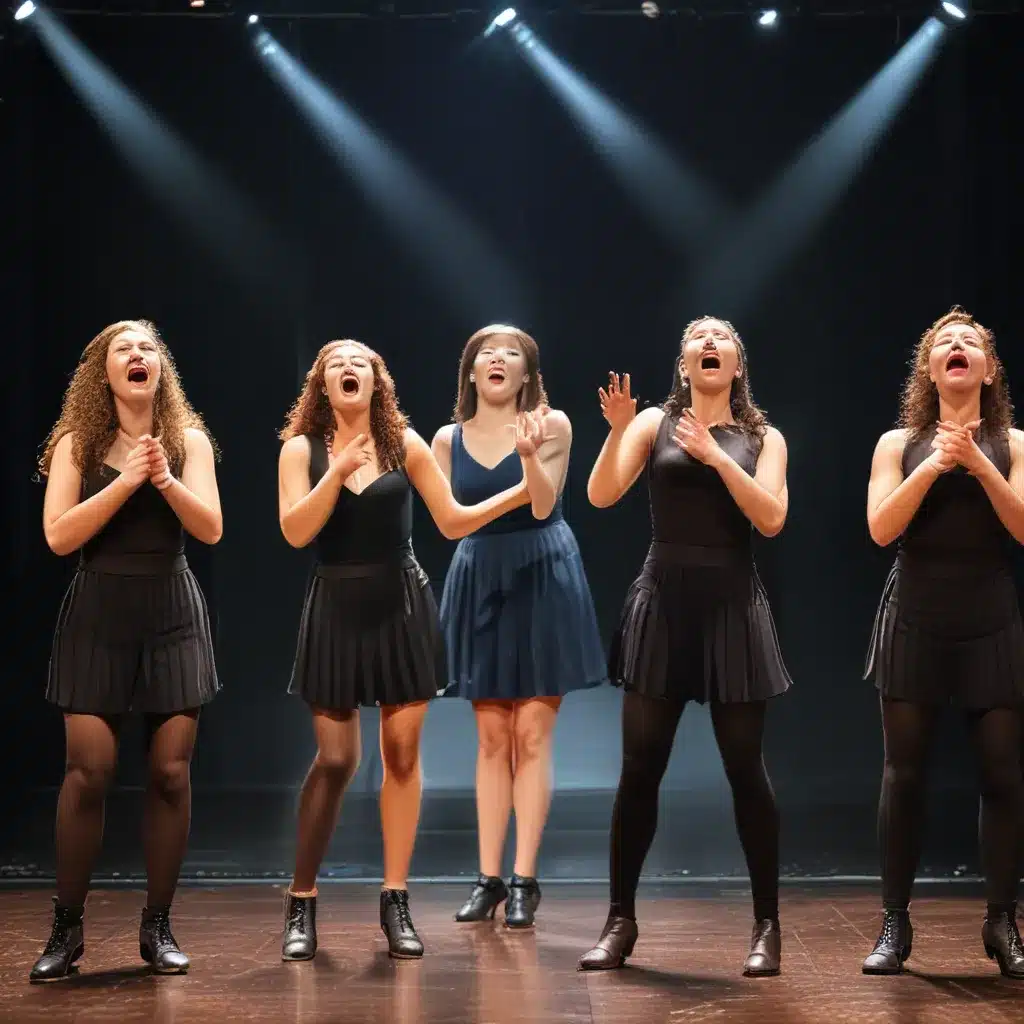
Finding Your Voice: Navigating the Diverse World of Musical Theater Singing
As a passionate performer myself, I’ve always been fascinated by the incredible range of vocal styles that grace the musical theater stage. From the powerful belting of a Broadway diva to the delicate sweetness of a ingénue, the human voice is an instrument capable of endless expression and versatility.
In my years training at the Musical Theater Center, I’ve had the privilege of exploring the nuances of various vocal techniques and how they can elevate a character’s emotional journey. It’s a journey I’m excited to share with you, dear reader, as we dive into the vibrant world of musical theater singing.
The Classical Crossover: Blending Operatic Elegance with Broadway Flair
One of the most captivating vocal styles in musical theater is the “classical crossover”. These performers possess the technical mastery of an opera singer, complete with pristine diction, expansive range, and a beautiful, resonant tone. Yet, they seamlessly weave this classical foundation into the rhythmic, emotive delivery of a Broadway performer.
Take, for example, the enchanting Lea Salonga, renowned for her portrayal of iconic roles like Éponine in “Les Misérables” and Jasmine in Disney’s “Aladdin”. Her voice soars with the lush, vibrant quality of a skilled soprano, but she effortlessly infuses it with the rawness and nuance required to convey the heart-wrenching journeys of her characters. Research has shown that this blend of operatic technique and theatrical expression captivates audiences and leaves an indelible mark on the musical theater canon.
Similarly, the legendary Renée Elise Goldsberry’s portrayal of Angelica Schuyler in “Hamilton” showcases her ability to seamlessly navigate between bel canto flourishes and the rhythmic, speech-like delivery of rap. Her voice dances across the score, weaving together the classical and the contemporary in a way that is both technically impressive and emotionally resonant.
The Power of the Belt: Commanding the Stage with Vocal Might
At the other end of the spectrum, we have the powerhouse belters – those vocalists who can fill a theater with the sheer force of their voices. These performers leverage their immense lung capacity and vocal control to deliver thrilling, high-energy performances that leave audiences in awe.
One such artist is Idina Menzel, whose rendition of “Defying Gravity” in “Wicked” has become the stuff of musical theater legend. Her ability to sustain a piercing, triumphant belt through the song’s climactic moments is a testament to her technical mastery and her capacity to elevate a character’s emotional journey through the power of her voice.
Studies have shown that the art of belting requires a delicate balance of breath support, vocal cord closure, and resonance, all of which Menzel and other master belters have honed to perfection. The result is a sound that is both viscerally thrilling and emotionally captivating, transporting the audience to the very heart of the story.
The Delicate Charm of the Ingénue: Embracing Vocal Softness and Vulnerability
In contrast to the bold, powerful belters, the ingénue vocal style is marked by a delicate, almost fragile quality – one that conveys a sense of innocence, vulnerability, and quiet strength.
Think of the tender, lilting quality of Kristin Chenoweth’s voice as she sings “Glitter and Be Gay” in “Candide” or the angelic sweetness of Kelli O’Hara’s performance in “The Light in the Piazza”. These vocalists possess the ability to captivate an audience with the subtlety and nuance of their delivery, drawing us into their characters’ emotional journeys through the sheer beauty and vulnerability of their sound.
This style of singing requires a deep understanding of breath control, vowel placement, and the ability to maintain clarity and resonance even in the softest of moments. It’s a testament to the versatility of the human voice and the power of vocal restraint to evoke a profound emotional response.
The Chameleon: Mastering a Diverse Vocal Repertoire
Perhaps the most admirable vocal artists in musical theater are those who can effortlessly navigate a wide range of styles, seamlessly transitioning between the demands of various roles and genres.
One such performer is the incomparable Audra McDonald, whose career has spanned everything from the lush, legato lines of Rodgers and Hammerstein to the rhythmic, contemporary stylings of Jason Robert Brown. Her ability to bring a unique, signature sound to each character she portrays is a testament to her vocal agility and her deep understanding of the emotional landscape of musical theater.
As the Artistic Director of the Musical Theater Center’s Conservatory has noted, “The true masters of the craft are those who can adapt their voices to the needs of the material, infusing each role with a distinct personality and vocal identity.” It’s a skill that requires years of dedicated training, a keen ear for nuance, and a deeply intuitive connection to the art form.
Embracing the Diversity of Musical Theater Singing
As I reflect on the incredible vocal artistry that graces the musical theater stage, I’m reminded of the profound impact that these diverse styles can have on an audience. Whether it’s the sweeping grandeur of a classical crossover, the raw power of a belter, the delicate charm of an ingénue, or the chameleon-like versatility of a true vocal virtuoso, each approach has the potential to captivate, inspire, and move us in ways that transcend the bounds of mere entertainment.
As performers, our task is to embrace this rich tapestry of vocal expression, to explore the nuances and the emotional depths of each style, and to use our voices as a means of telling the stories that shape the heart and soul of the musical theater canon. And as audience members, our role is to open ourselves to the magic of these diverse vocal landscapes, to allow ourselves to be transported and transformed by the sheer artistry of the human voice.
So, let us embark on this journey together, dear reader, as we delve deeper into the world of musical theater singing and discover the endless possibilities that lie within the human voice.

